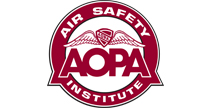Windscreen ice cuts short flight shorter
(NYC08CA072)
 By David Kenny
By David Kenny
Never underestimate the power of a little bit of ice. It can fell inexperienced and high-time pilots alike and strike on long cross-countries or short trips.
On Dec. 13, 2007, a Beech B55 Baron took off for a 10-minute flight from Harrisburg to Lancaster, Pa., for some scheduled maintenance. Surface temperatures were at the freezing mark; an airmet was in effect for light to moderate icing in freezing drizzle; and the ceiling was at 4,300 feet—high enough to retain visual contact with the ground while flying IFR. The Baron was equipped with deicing boots, and the airline transport pilot had 10,000 hours.
Rain and freezing drizzle caused airframe icing, but the boots cleared the ice from the airplane. However, the windscreen continued to accumulate ice until the pilot couldn’t see ahead. The aircraft’s old windscreen anti-ice plate had been removed, but a new one hadn’t been installed.
Related Links
Weather Wise: Precipitation and Icing online course
IFR Insights: Regulations online course
Accident Case Study: Airframe Icing
Aircraft Icing Safety Advisor
Aircraft Deicing and Anti-Icing Equipment Safety Advisor
The pilot used the autopilot to fly a coupled ILS approach, decoupling it at about 300 feet agl. The view from the side windows and the radar altimeter suggested that he had enough altitude to make the runway. The ground sloped upward between his position and the runway threshold, something neither the side view nor the radar altimeter could show him.
The Baron hit the ground about 150 feet short of the threshold, collapsing the nose gear and shearing off the right main gear, which in turn damaged the spar. The pilot escaped serious injury.
The NTSB blamed the accident primarily on his “failure to maintain a proper glidepath,” but also cited his “improper decision to fly with known deficiencies in equipment.” It’s easy to understand the temptation to go nevertheless. Appointments at good maintenance shops are often scheduled well in advance; if the airplane is not there on the appointed day, there may not be another opening for weeks. Also consider the pilot’s flight experience and relatively short flight. He had probably flown through nastier conditions in the course of a long career, and the Baron’s deicing equipment should have been (and was) enough to keep the wings and tail clear for the brief duration of the flight.
The equipment requirements in the federal aviation regulations sometimes seem conservative, but they’re usually the result of someone’s bitter experience. Certification for flight into known icing requires “functioning deicing or anti-icing equipment protecting each propeller, windshield, wing, stabilizing or control system, and each airspeed, altimeter, rate of climb, or flight attitude instrument system.” If any of these are inoperative, the aircraft is no longer airworthy for flight in icing conditions. As the pilot of this Baron found out, this isn’t just a legal quibble. The practical consequences can be severe.